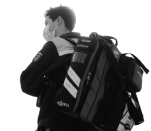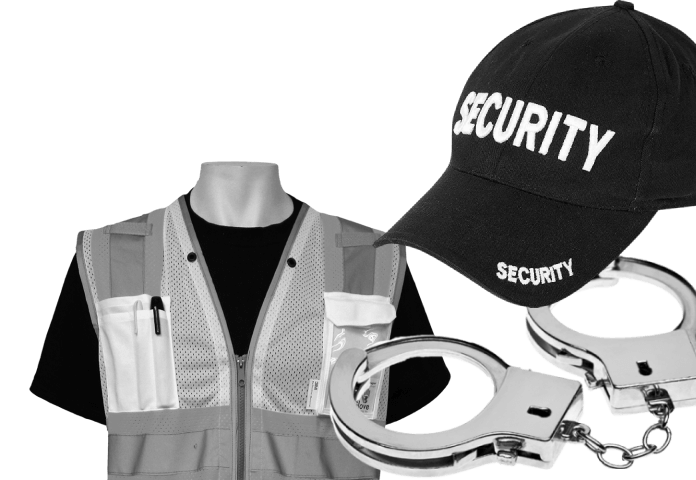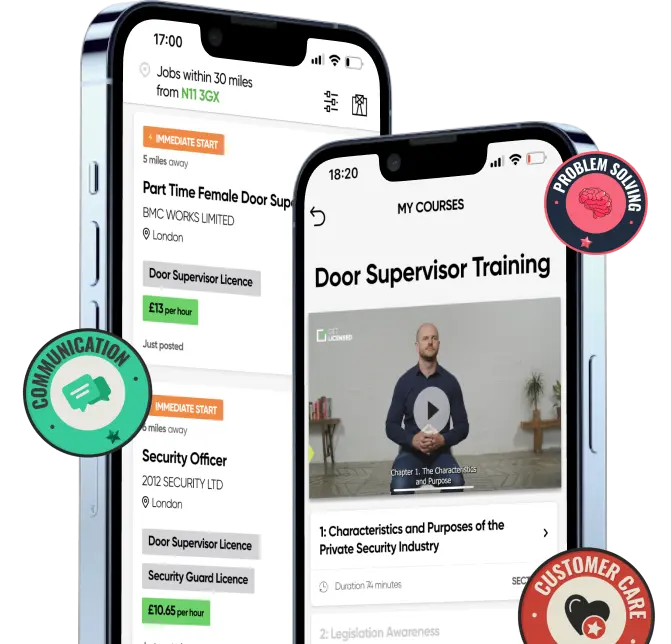The reputation of those members of club staff known as “bouncers” has come to be a little bit troubled over the years, with people happy to believe that they make a living out of being physically powerful and short-tempered. But the term “Door Supervisor”, which is the correct job title, is presently largely free of such associations. Though the reputation which surrounds bouncers is often driven by stories that portray them as being dangerous beasts who derive job satisfaction from the act of hitting someone, anyone who has real experience of the Private Security Industry these days knows this to be almost entirely a thing of the past.
The SIA Training for Door Supervisors exposes exactly how false the old cliché is in relation to the professionals who work in the nightspots of Avon. There is no training in how to use a knuckle-duster. Private security is an extremely serious matter, and anyone who has done it for a living realises that the public often view Door Supervisors as being practically equivalent to policemen
A Door Supervisor’s job is, quite simply, to protect the safety of staff and customers on any licensed premises. They are entitled to exercise the right to refuse entry to patrons who they deem to be unsuitable, whether because they are too young, too badly or scantily dressed or, from the Supervisor’s point of view, a likely troublemaker. If they suspect that someone is carrying an offensive weapon, drugs or drug paraphernalia, the Supervisor is legally entitled to conduct a search prior to admitting or turning the individual away.
If you wish to work on the doors in the UK your first step is a very simple one – get licensed, and do it soon. Working as a Security professional without undergoing and completing the correct SIA training for the role concerned is a criminal offence, and one which could see you behind bars for 180 days – or financially poorer. An SIA training course lasting just four days, a couple of exam passes and a CRB check are all that stands between you and removing those risks.
After the doors have been shut to prevent anyone else entering, the door supervisor turns to patrolling the premises, and monitors the interior and exterior of the venue for anything untoward, preventing violence and dealing with misbehaving customers in the appropriate manner, which may involve the ejection or arrest of anyone who is considered to pose a threat to other customers.
The SIA training course for Door Supervisors, if you should pass the exams, grants you an Integrated Licence that empowers you to work as a Security Guard too. Training as a door supervisor is therefore without a doubt your best option should you wish to find gainful employment within the leisure and retail sectors of the security industry. The SIA training syllabus covers more modules, of a more challenging nature, than those on the syllabus for Security Guards, yet it does this over the same 30-hour period. It is therefore definitely true to say that the Door Supervision accreditation is measurably tougher to achieve, but the result will amount to a far greater benefit to you in terms of your employability.
The only level of accreditation above that of a Door Supervisor is Close Protectors (or Bodyguard), but as the SIA training course for a Close Protection licence takes 150 classroom hours and requires you to pay for and arrange an independent First Aid qualification it does require a firm commitment which demands your absolute certainty and genuine belief in your ability to find a Close Protector job.
SIA Training courses in Bristol take place at the City Inn Hotel in the city centre, well served by public transport. The four day course runs for a total of thirty hours – twenty-eight of these hours devoted to classroom time during which the syllabus is studied, and two exam hours.
The syllabus is in two units. Unit 1 is centred around the role and responsibility of a Door Supervisor, and will cover such topics as behaviour; drugs; licensing; civil and criminal law and powers of arrest, in addition to liasing with the emergency services. Other required elements within this part of the SIA training programme include Equal Opportunities and Health and Safety.
The second unit covers Communication Skills and Conflict Management. This is the part of the course which oversees the elements of the job that Door Supervisors or “bouncers” are famous for, such as breaking up violent confrontation and ejecting people from the venue for behaviour which is illegal or contravenes venue policy. In this unit of the course, matters of how to do the job of Door Supervisor are dealt with (the first part being concerned with “why” the job is necessary) and the prospective Supervisor familiarises himself with standards and best practices for resolving conflict.
On successful completion of this SIA training course, the candidate gains their licence and can work as a Door Supervisor – results are posted on the awarding body’s website on a date specified by the awarding body.










































